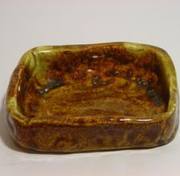You Have Data, Now What?
So, your company just went through another round of store inventories and your inventory service has plopped a ton of data on you – now what? For the sake of this discussion, let’s assume that your organization counts inventory at the sku / upc level and not just the financial level. The industry calls it a “full-flavored inventory count”. Ok, so depending on your specific industry you might have 100 unique sku’s or, in the case of a grocery retailer, you might have 35,000 unique sku’s in the data files. Either way, you got a buttload of data to play with. It’s your job to take this lump of clay and mold it into something useful for your organization. Remember, just like in art class when you were a kid – a mound of grey clay, some carving and shaping tools, and your imagination. The teachers secretly love when clay day rolls around. Why? Because they don’t have to do anything more than plop some thick mud in front of you and say, “Use your imagination to make something useful for your mom and dad.” Then they sit back, crack a book, and relax, while you struggle to morph a lump into a timeless piece of…… yeah, ok, you get it.
What to do with all this inventory data? Inventory is probably your largest asset on your balance sheet and the most critical piece of your business, yet many companies still struggle with analyzing and making sense of the data they receive after a physical inventory. Too much stuff and you choke on it; not enough and your customer goes somewhere else to get it; stock the wrong goods, you still choke and the customer finds a new favorite place to buy. The lump needs to be carved, shaped, molded, trimmed, amended, and tweaked until you get that useful, profitable, glorious mix of somethingness that speaks to your customers on a regular basis. Well, you need tools just like what the teacher put in the middle of the table in art class. Don’t be the kid who pounds his fist into the middle of the lump, pinch the edges and calls it an ashtray. Nevermind that mom and dad don’t even smoke – this is NOT useful.
You need to use tools to take that lump of data and shape it into something that your organization can use. You need some analysis tools, dude. There’s a slew of tools out there – you just need to use the one that fits your business. Big or small business, use the tool that works for you. If your on the big business side of things then you might consider tools like:
JDA (http://www.jda.com/solutions/inventory-optimization-overview/)
COGNOS (http://www-01.ibm.com/software/integration/sca/inventory-product-flow-analyst/)
DemandPoint (http://www.demandpointinc.com/software/manufacturing-software/)
SAS (http://www.sas.com/solutions/sci/index.html).
These tool providers work with both retailers and manufacturers and are highly scalable and extremely sophisticated. There is a tool that specializes in grocery retail inventory analytics:
Retalix (http://www.retalix.com/index.cfm?pageid=538).
Small businesses with inventory have tools, as well. Check out this link for a little help on some inventory shaping and molding:
http://www.cpasitesolutions.com/content/calcs/Inventory.html
If you happen to use Quickbooks and need some inventory tools to get something useful out of that data then visit these guys and see if they can help:
http://www.fishbowlinventory.com/
There is even a FREE tool out there that you can use to help with your inventory data. Check this company out and see if their tool works for you:
http://www.microstrategy.com/bi-applications/Industries/retail.asp
Of course, you’ll need a modern-day Leonardo DaVinci (an IT guy) to make this free software work with your current systems, but there are some Leonardo’s out there who can mold that lump to your specifications using the Microstrategy tool.
A word of caution, a new tool is not the cure-all for your lump of clay. If you don’t understand how to properly use your tools you might still end up with a fist-pounded ashtray. Take the time to learn how to use your tools properly. Practice, run different scenarios, create what-ifs, tweak your min. and max. parameters, and hone your craft. Even really expensive tools won’t work if you don’t know how to use them – just ask the the Pennsylvania Liquor Control Board.
http://www.myfoxphilly.com/dpp/news/local_news/critics-howl-after-latest-plcb-audit-
One other issue to be aware of – if your inventory service gives you bad data then you will get bad results with the tool. Try working with a dried out lump of clay – it’s not very flexible and the shape stays pretty lumpy. Make sure the data you get from your inventory service is accurate and in the raw form you would like to start work with. Good data, the proper tools, and some practical experience gets you something useful.



